Content creation is producing engaging, valuable and relevant content for a specific audience. Content can be in various forms, such as blog posts, videos, podcasts, ebooks, infographics, social media posts and more. Content creation is essential for anyone wanting to grow their online presence, attract more customers, build trust and authority, and achieve their goals.
But how do you create content that stands out from the crowd and resonates with your target audience? How do you plan, produce and distribute your content effectively and efficiently? How do you measure the impact of your content and optimize it for better results?
In this comprehensive guide, we will cover the following aspects of content creation:
- The benefits of content creation
- The steps of content creation
- The tools and resources for content creation
- The best practices and tips for content creation
The Benefits of Content Creation
Content creation has many benefits for both individuals and businesses. Here are some of the main ones:
- Content creation helps you establish your brand identity and voice. Creating content that reflects your values, personality and expertise allows you to differentiate yourself from your competitors and attract your ideal customers.
- Content creation helps you build trust and credibility with your audience. By providing valuable information, insights and solutions to their problems, you can demonstrate your authority and reliability in your niche and earn their loyalty and respect.
- Content creation helps you increase your visibility and reach. By creating optimized content for search engines and social media platforms, you can boost your organic traffic and exposure to potential customers looking for what you offer.
- Content creation helps you generate leads and sales. By creating content that is relevant to your audience’s needs, interests and pain points, you can capture their attention and curiosity, persuade them to take action and convert them into subscribers or customers.
- Content creation helps you grow your network and influence. By creating engaging, shareable and interactive content, you can spark conversations, interactions and collaborations with other influencers, experts and peers in your industry and expand your network and influence.
The Steps of Content Creation
Content creation is not a one-time activity but a continuous process that involves several steps. Here are the main ones:
- Define your goals and audience. Before you create any content, you need to clearly understand what you want to achieve with your content and who you want to reach with it. You need to set SMART (specific, measurable, achievable, relevant and time-bound) goals that align with your overall strategy and vision. You must also research your target audience and understand their demographics, psychographics, challenges, desires, preferences and behaviors.
- Plan your content strategy. Once you have defined your goals and audience, you need to plan how to create and deliver your content to them. You need to decide what type of content you will create (e.g., blog posts, videos, podcasts), what topics you will cover (e.g., based on keyword research, customer feedback, industry trends), what tone and style you will use (e.g., formal, casual, humorous), what format and length you will choose (e.g., text, audio, video), what channels you will use (e.g., website, email, social media), what frequency and schedule you will follow (e.g., daily, weekly, monthly), what budget and resources you will allocate (e.g., time, money, tools), what metrics you will track (e.g., views, shares, comments, leads, sales) and what tools you will use (e.g., content management system, content calendar, analytics software).
- Produce your content. This is the stage where you create your content based on your plan. You need to follow the best practices for each type of content (e.g., write catchy headlines, use clear structure, include visuals, add call-to-action) and ensure that your content is original, accurate, relevant, valuable and engaging for your audience. You must also optimize your content for search engines (e.g., use keywords, meta tags, and links) and social media platforms (e.g., hashtags, mentions, and emojis) to increase its visibility and reach.
- Distribute your content. This is the stage where you publish and promote your content to your audience through various channels. You must follow the best practices for each channel (e.g., use appropriate size, format, and caption) and ensure your content is consistent, timely, targeted and personalized for each platform and segment. You also need to leverage different strategies to amplify your content reach and engagement, such as email marketing, social media marketing, influencer marketing, paid advertising and more.
- Analyze your content performance. This is the stage where you measure and evaluate the results of your content creation efforts. You need to use various tools and methods to collect and analyze data on your content performance, such as views, shares, comments, leads, sales and more. You also need to compare your actual results with your expected goals and identify what worked well and what didn’t. You also need to gather feedback from your audience and stakeholders and learn from their opinions and suggestions.
- Optimize your content creation process. This stage is where you improve and refine your content creation process based on your analysis and feedback. You need to adjust and change your content strategy, plan, production, distribution and analysis to optimize your content quality, quantity, efficiency and effectiveness. You must also keep up with the latest trends and developments in your industry and niche and update your content accordingly.
The Tools and Resources for Content Creation
Content creation requires various tools and resources to help you plan, produce, distribute, analyze and optimize your content. Here are some of the most popular and useful ones:
- Content management system (CMS): A software that helps you create, manage, and publish your website or blog content. Examples: WordPress, Squarespace, Wix.
- Content calendar: A tool that helps you organize and schedule your content creation and distribution activities. Examples: Google Calendar, Trello, CoSchedule.
- Content creation tools: Tools that help you create different types of content, such as text, audio, video, graphics and more. Examples: Google Docs, Canva, Audacity, and Camtasia.
- Content optimization tools: Tools that help you optimize your content for search engines and social media platforms by providing suggestions and feedback on keywords, meta tags, links, hashtags, mentions, emojis and more. Examples: Yoast SEO, SEMrush, BuzzSumo.
- Content distribution tools: Tools that help you publish and promote your content on various channels and platforms by automating and streamlining the process. Examples: Mailchimp, Hootsuite, Buffer.
- Content analysis tools: Tools that help you measure and evaluate your content performance by providing data and insights on views, shares, comments, leads, sales and more. Examples: Google Analytics, Facebook Insights, HubSpot.
The Best Practices and Tips for Content Creation
Content creation is an art that requires creativity, skill and practice. Here are some of the best practices and tips for content creation:
- Know your audience: The most crucial thing in content creation is to know who you are creating content for. You need to understand their needs, interests, pain points, preferences and behaviors and create content that matches them.
- Provide value: The main goal of content creation is to provide value to your audience. You must create content that solves their problems, answers their questions, educates, entertains, or inspires them.
- Be original: The best way to stand out is to be original in your content creation. You must create content showcasing your unique voice, personality and expertise and avoid copying or plagiarizing others.
- Be consistent: Consistency in content creation is the key to building trust and loyalty with your audience. You must create content that aligns with your brand identity and voice and follow a regular schedule and frequency.
- Be engaging: The secret to attracting and retaining your audience is to be engaging in your content creation. You need to create content that sparks conversations, interactions and collaborations with your audience and other influencers in your niche.
- Be adaptable: The challenge of content creation is adapting to your industry and niche's changing trends and demands. You need to create up-to-date, relevant and fresh content and avoid creating outdated, irrelevant or stale content.
- Be experimental: The fun of content creation is experimenting with your content types, topics, formats, lengths, styles and channels. You need to create diverse, varied and dynamic content and avoid creating monotonous, repetitive or boring content.
- Be analytical: The essence of content creation is to be analytical with your content results and feedback. You need to create measurable, testable and improvable content and avoid creating unmeasurable, untestable or unimprovable content.
Content creation is an art that can help you achieve your personal and professional goals. By following this comprehensive guide, you can master the art of content creation and create engaging, valuable and relevant content for your audience. Happy Content Creation! 😊


